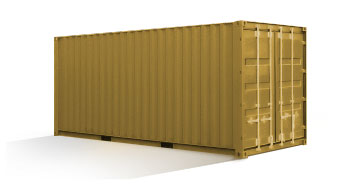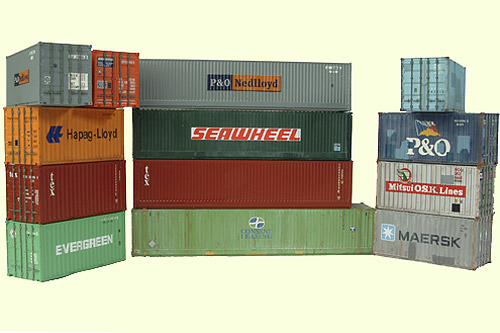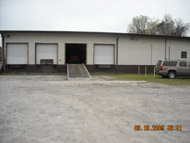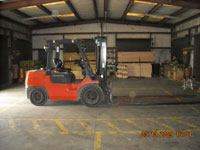Freight from the USA
|
|
|
|||
Sizes of Containers | Stuffing Methods | Types of PU Locations | Reading FCL Rate | Avoiding Mistakes | S.O.C.
Our primary business is shipping from the U.S. freight LCL (Less than Container Load).
With LCL, multiple shippers share space in 40-foot sea containers, which are efficiently loaded and unloaded by professionals at Container Freight Stations (CFS).
With FCL (Full Container Load), shippers typically rent entire containers from steamship lines and are responsible for picking up, loading, unloading, and returning the containers.
International shipping via LCL, unlike FCL, does not require special knowledge and skills. It is more flexible and less restricted at any stage of international cargo transportation. However, while LCL offers flexibility, depending on the international shipping cost structure, FCL may be more efficient for high-volume cargo.
With FCL, unlike with LCL, shippers are at risk of heavy penalties from steamship lines for any negligence. Therefore, we only offer FCL service to our experienced B2B customers who have worked with us repeatedly. To request that we serve FCL freight, customers must have successfully completed at least three LCL shipments with us.
Our economical LCL service should meet your international transportation needs if you can pack all your goods in boxes or crates.
LCL rates are calculated per cubic meter or cubic foot. Watch this video on YouTube to learn about the size of a cubic meter. Calculate an LCL price quote in our online freight calculator 24/7 and book your shipment at your convenience. Receive our instructions within 24 hours. Watch this 3-minute video on YouTube about operating with our LCL online freight calculator.
The calculator also helps shippers compare international shipping costs with other offers and FCL options.
FCL is the abbreviation "Full Container Load" used in international cargo transportation.
Regarding cargo transportation from the USA by sea, FCL refers to an ocean freight service that grants rights to ship entire multimodal sea containers.
Other industry-related terms refer to multimodal sea containers: 20-foot, 40-foot, 40HC, etc.
General Alternatives:
Size-Based Terms:
Colloquial/Industry Terms:
Typically, with FCL, containers are delivered, loaded, and sealed for international transportation from the United States at the shipper's facilities. Once loaded, they are transported within the U.S. by land to seaports, where they await loading onto vessels for further transportation from the U.S. to their overseas destinations.
Please note that Container Yards are not necessarily seaports. CY can be within landlocked city areas. They are connected with seaports by rail or truck lines. Often, FCL rates include ground transportation.
Do not confuse the trucking costs between CYs and seaports, which are included in the freight rate, with local trucking from/to CY.
Such trucking is called Pre-carriage and On-carriage, or local trucking. That assumes ground transportation from/to CY to/from cargo locations. Local trucking is NOT included in rates. If an ocean carrier offers local trucking, the costs of local trucking are separated from the costs of ocean freight.
Also, note that departure and arrival ports are not necessarily in the countries of origin and destinations. Containers can be transported from/to seaports of departure/arrival to CYs in other countries by rail, trucks, or smaller local vessels (fiders).
Finally, there could be direct international shipping from the USA to the destination country, or with transshipment via a hub seaport somewhere along the way to the port of entry to the final destination. For example, it can be shipped from the USA via ports such as Hong Kong, Singapore, Hamburg, etc.

Please note that even though you ship goods from the U.S., if the load is sufficient to fill a 20-ft box (i.e., the volume of your commodity is approximately 15–25 cubic meters), we recommend considering our Economy LCL Service. In certain circumstances, you may find that delivering from the USA LCL is more flexible and reduces liability.
With LCL, unlike with FCL, shippers are not obligated to load and secure cargo in containers. Unless you are experienced in container stuffing, think twice before requesting FCL.
Additionally, if you are shipping boxes, crates, or pallets from the USA and self-delivering them to an LCL carrier terminal (CFS), please note that this is not the same as a Container Yard.
However, if you need to ship internationally a larger load that is enough to fill an entire FEU, then FCL can be the only cost-effective option.
Global containerized cargo transportation from the USA should be safer, easier to organize, and more cost-effective than other services, such as roll-on/roll-off (Ro-Ro) or Breakbulk. The only limitation is that the size and weight of the commodity must fit in a 40-foot box.
Other multimodal equipment is available. It is designed to ship specific kinds of commodities. However, sea containers other than 20 or 40 feet are typically subject to equipment availability from a steamship line.
If you are a first-time shipper moving goods overseas from the USA, do not confuse FCL freight with international moving company services.
International moving companies should:
Deliver a 20- or 40-foot box to your door
Professionally load and secure your belongings
Handle all customs paperwork
Transport vehicles along with household goods (if agreed)
However, their services come at a high cost.
With FCL on your own:
You rent the entire 20ft or 40ft unit from a steamship line
You are responsible for all aspects of the shipment:
Meeting the truck at a safe location
Loading and securing everything properly (1-2 hours free; after that, 50−75+/hour waiting fees apply)
Delivering the sealed unit to the container yard (CY)
You must prepare all required paperwork
At the destination, your consignee must:
Clear customs and pay all charges
Pick up the unit from the port
Transport it, unload, and return the empty promptly to avoid penalties
The procedures for transporting FCL are quite complex. However, if you are well-organized and keep control of your international delivery, all this should cost you the same amount you would pay an international moving company.
Once again, if you can pack all your goods in boxes or crates, always consider the international shipping LCL as an alternative. If you ship internationally in quantities of less than 10-15 cubic meters, then LCL should be less complicated, more convenient, and cheaper than FCL.

The most common method for delivering goods from the USA overseas is via FCL, utilizing 20-foot, 40-foot, and 40HC multimodal sea containers.
However, there are other types of equipment in the international cargo transportation industry, such as 45-foot High Cubes, Open Top, Flat Racks, etc. However, such equipment is always subject to availability at CYs. If you ship regular commodities FCL, then consider these three types of equipment:
20-foot standard
40-foot standard
40-foot high cube
*Payload weight exceeds over-the-road legal limits in the US and Canada. The recommended maximum payload for shipping from the USA and Canada is 35,000 lbs per 20-foot box and 42,000 lbs per 40-foot box.

 ATTENTION TO CAR SHIPPERS! Exporting cars and other motorized vehicles from the USA that require U.S. DMV registration (such as motorcycles, boats on trailers, jets, etc.) is a priority for quality loading warehouses. As soon as motor vehicles are delivered to the company's warehouse along with their original titles, the quality loading warehouse should pick up an empty container from the yard and professionally load and secure the vehicles for further transportation overseas from the USA.
ATTENTION TO CAR SHIPPERS! Exporting cars and other motorized vehicles from the USA that require U.S. DMV registration (such as motorcycles, boats on trailers, jets, etc.) is a priority for quality loading warehouses. As soon as motor vehicles are delivered to the company's warehouse along with their original titles, the quality loading warehouse should pick up an empty container from the yard and professionally load and secure the vehicles for further transportation overseas from the USA.
Most of the time, FCL quotes on cargo transportation from the USA would be DOOR-PORT FOB vessel or FREE OUT. Specifically, EXW (Ex Works) at the named place of the load pickup TO the named destination seaport CY, and FOB (Free On Board) ship's rail at the named port of origin.
That means that FCL quotes to ship from the USA contain charges related to:
Remember that FCL quotes typically DO NOT include any charges at destinations.
Upon the container's arrival at the destination country's yard, the consignee (recipient of the goods) will be responsible for all charges related to import recovery. To get a freight release, the consignee must pay:
A sample of FCL quote on shipping from the USA:
* Above rates are valid through 6/7/2007
* Rates DO NOT include import customs clearance fees, duties, taxes, or marine cargo insurance.
* Marine cargo insurance cost is 1.5% of the value declared, subject to a deductible of USD 1,000 per unit, and a minimum premium of USD 350 per unit.
* Maximum legal payload 18 metric tons per 20-foot & 20 metric tons per 40-foot containers; the load must be evenly spread along the floor.
* Plus International Ship and Port Facility Security Code (ISPS) Euro 14 per unit for all shipments via UK/Continent/Scan-Balt/Black Sea
* Plus ocean carrier security fee (CSF) for all USA and Canadian ports of loading, each unit for USD 6
* Equipment must be returned "CLEAN AND ODOR FREE." Any cleaning costs incurred will be charged to the shipper's account.
A. Storage/demurrage charges at destinations.
Your consignee (recipient) should receive an arrival notice several days before your shipment arrives. When obtaining a bill of lading, ensure that the consignee's contact information initially provided in a booking request is correct.
Act promptly! Free storage time at a destination yard is limited. Depending on the destination, it varies from 7 to 14 days. After that, storage may dramatically increase the total international shipping cost.
By law, your consignee can work directly with the destination country's customs and other parties related to your international ocean freight shipment to recover the imported goods.
However, suppose the consignee is unfamiliar with import procedures in the international cargo transportation industry. In that case, we suggest that your consignee request that professionals complete the import release on their behalf immediately. It can be the customs broker of your destination country or a licensed freight forwarder. Please provide them with the arrival notice and other documents the destination authorities require. They will charge a reasonable fee for their service. However, they should obtain customs and warehouse releases with no (or minimal) storage and demurrage charges.
B. S.O.C. - Shipper Owned Containers.
When you book an FCL shipment and request container delivery for the load, you "rent" the container from the steamship line you use for conveying from the USA. The "Rent" charges are included in the ocean freight rate. The shipper must remember that once the container is released at the destination and leaves the yard to be unloaded at the consignee's facility, it must be returned empty and in good condition to the yard within a specific time limit. Otherwise, detention charges will arise.
If your destination facility is located far from the Container Yard, you should consider the potential charges for equipment detention.
For example, upon the release at the destination CY, your container must continue to travel by rail thousands of miles away from the yard, either in bond or not. Then, the empty must be returned to the yard.
In this situation, the only option is to use S.O.C. (Shipper-Owned Containers) to avoid detention charges and eliminate expenses related to container return. Sometimes it is referred to as a "One-way" box.
S.O.C. means buying a container to ship cargo from the USA at the origin. Then, it is your property, and you are not obligated to return it. After it is emptied, you may sell it, use it for storage, or destroy it, among other options.
Many dealers worldwide can sell new and used multimodal equipment for international shipping. However, remember that a STEAMSHIP LINE MAY NOT ACCEPT S.O.C. WITHOUT A CERTIFIED INSPECTION.
Before purchasing a piece of equipment for international cargo transportation, you should consider:
Why do you need S.O.C.? Consider a reload released by customs cargo from the container into a trailer or another one purchased at the destination.
If you still need an S.O.C., then think about:
C. The shipper is responsible for the commodity and export/import documentation.
When transporting cargo from the USA overseas, the shipper should clearly understand that they are held responsible for the description and legality of the commodity, as well as the sufficiency of the documents submitted to international shipping.
An ocean carrier bill of lading, the mandatory document in international cargo transportation by sea, acts as a title for your shipped goods, as a rule, stating *SHIPPER LOAD AND COUNT* and *SAID BY SHIPPER TO CONTAIN.* That means that the ocean carrier (and a freight forwarder who represents this carrier) is not responsible for information provided by the shipper on his commodity.
A freight forwarder should guide shippers through the complexity of international shipping procedures. However, the shipper is responsible for providing all necessary documents related to their shipment that the officials of the origin and destination countries will require.
Below is the list of commonly used documents required to be submitted in international shipping by sea:
MANDATORY DOCUMENTS:
A. International Ocean Freight Bill of Lading – Ocean carrier's transport document. It displays commodity, cargo routing, consigner, and consignee information, among others. It acts as a title for exporting goods.
B.1. For commercial international ocean shipments - a Commercial Invoice. A complete description of the commodity being shipped.
B.2. For moving household goods and personal belongings overseas – a Valued Packing List. An inventory list with a value assigned to each item being shipped.
Please note that some couriers require proforma commercial invoices for moving household goods from the USA. However, having a complete, valued packing list submitted at the origin upon Customs' request at the destination makes it easier to transfer the valued packing list into the form of a proforma commercial invoice.
In respect of U.S. Customs, all commercial invoices (and valued packing lists) must be in English and show:
ADDITIONAL DOCUMENTS DEPENDING ON COMMODITY AND COUNTRY OF ORIGIN:
D. Packing list in international shipping - Breakdown description: pieces, weights, and packing materials. (Examples - Wood Pallets, Skids, Crates, Boxes, Dunnage, Straw Packing, etc.)
E. Fumigation Certificate - Certification that cargo and packing materials were fumigated after it had been containerized and are free of Infestation.
F. Special Documents - Dependent on commodity and country of origin.
Visa
Quota
Visa/Quota
Certificate of Origin
North American Free Trade Agreement Certificate of Origin (NAFTA)
Packing Declaration
Dangerous Goods Declaration - hazardous materials
Fish and Wildlife Declaration
Consular Legalized documents
F.D.A.
U.S.D.A.
Anti-Dumping
Words: 4
Characters: 24
|
|